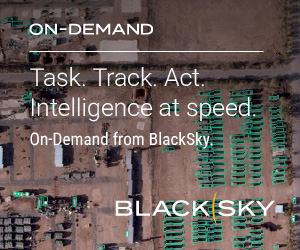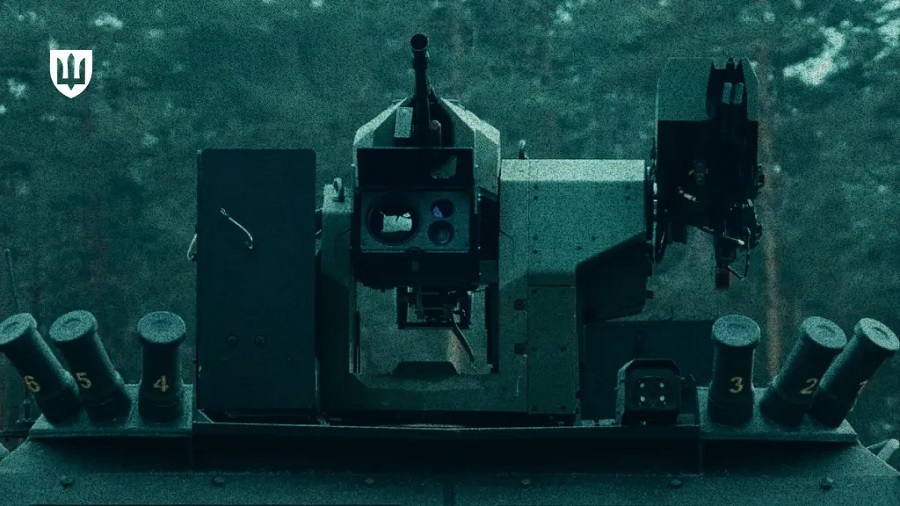Endowed with an investment of 32.6 million euros, the project began at the end of 2020 and has lasted 30 months. The event, which was organized by GMV in collaboration with Escribano Mechanical & Engineering, was the culmination of the project. The event included implementation of unmanned systems on the battlefield, as well as their use in swarming operations.
The demonstration used two THeMIS UGVs, manufactured by Milrem Robotics, Europe’s leading developer of robotics and autonomous systems, and modified by other companies participating in the project. These vehicles are equipped with autonomous functions, both individually (one UGV can receive a mission and complete it in an isolated manner, with no operator involvement) and as swarms (various UGVs can be combined as a single team and given a mission, performing self-management to achieve the objective).

The list below details the use cases that were successfully presented during the day-long event:
Demonstration of the autonomy systems at the individual level:
- “Follow me” mode: the THeMIS UGVs are told to follow a person, to demonstrate their capabilities.
- Creation and launching of a surveillance mission across the demonstration zone.
- Navigation using reference points for surveillance, to demonstrate the vehicles’ ability to avoid obstacles that could appear in their path.
- Mission to demonstrate how the system can perform autonomous resupply of materials (medical supplies, food, etc.) with no need for operator control.
Demonstration of the autonomy systems in swarming operations:
- Surveillance mission in the area.
- Resupply mission using two THeMIS UGVs.
- Recovery of the previous surveillance mission.
GMV’s role in the iMUGS project
At the technical level, the iMUGS project has consisted of developing a scalable architecture and design, suitable for application in manned and unmanned ground and aerial vehicles, with the aim of standardizing the European systems and the subsystems they use for command and control, communications, sensing, payload management, and autonomy algorithms.
GMV has been responsible for coordinating the command and control and C4ISR interoperability subproject, where it has developed a C2ISR system to manage UxVs. That system is capable of planning and executing joint operations between manned and unmanned systems. It also allows control of the payloads installed on the platform and use and distribution of data from the UGV’s data sensors, as a way to ensure interoperability and standardization of interfaces with C2 systems, C4I databases, and existing ISR networks.

José Luis Delgado, head of GMV’s Defense and Security section, emphasizes that the system’s primary added value is found in the fact that thanks to the advanced autonomous capabilities it provides, an operator can easily manage multiple platforms as if they were just another member of the team (manned-unmanned teaming).
GMV’s participation in the iMUGS project is based on the company’s acquired experience with C2 ground systems, C2 combatant systems, and joint ISR (JISR) interoperability, all of which are areas where GMV is one of the leading companies in Europe. GMV is the Spanish Ministry of Defence’s preferred supplier of command and control systems for artillery and infantry, and since 2016 it has been responsible for maintenance and evolution of the EUCCIS C2 system for the European External Action Service (EEAS).
The iMUGS consortium is led by the Estonian company Milrem Robotics, with a total of 7 participating countries (France, Estonia, Finland, Spain, Germany, Latvia, and Belgium), along with a total of 13 companies.


















![KNDS: MARS 3 successfully launches Naval Strike Missile in first live-fire test [VIDEO]](https://defence-industry.eu/wp-content/uploads/2025/07/MARS-3-successfully-launches-Naval-Strike-Missile-in-first-live-fire-test-VIDEO.jpg)




![MightyFly demonstrates autonomous cargo flight capabilities to U.S. Air Force [VIDEO]](https://defence-industry.eu/wp-content/uploads/2025/07/MightyFly-demonstrates-autonomous-cargo-flight-capabilities-to-U.S.-Air-Force-VIDEO.jpg)


